Results 11 to 20 of 52
Thread: Classic example of Celluloid Rot
Hybrid View
-
12-11-2013, 12:25 AM #1
-
09-08-2016, 04:23 PM #2

Reviving this thread, for a question.
When and what causes the celluloid to release the gases that are so harmful? Is it light, air, heat, water, soaps? The reason I'm asking is, I recently purchased a 7 day set from the '50's era. After talking to Cudarunner, he advised me to be aware of cellrot, IF the have celluloid scales. The razor set is enroute, so I'm not sure what the scales are made of.
"Supposedly", this particular set was purchased, yet never used. As a gun dealer, I know how that "never fired" stuff really works. However, if these were, in fact, never used and kept in the closed case, would this be why there is no cellrot...yet. Like I said, I have only seen pics. So I don't know if they are celluloid scales or not.
-
09-08-2016, 05:28 PM #3

I've got celluloid scaled razors made before WWII, after, and 98% are fine. Referring to a couple of hundred that have come, and some have gone. OTOH, I've had 2 that came to me fine, and developed the rot. If you catch them early enough you can remove the scales and save the metal from corrosion. Chances are yours will be fine if they are celluloid. I don't recall exactly what causes it. Some scales are more susceptible. Some of the faux tortoise, the green Otto Deutsch 'Hans' are known to suffer cell rot, though some don't go that way. I keep mine in a cabinet, or a drawer. Dry and definitely out of the sun.
Be careful how you treat people on your way up, you may meet them again on your way back down.
-
The Following User Says Thank You to JimmyHAD For This Useful Post:
cudarunner (09-08-2016)
-
09-08-2016, 07:43 PM #4

Okay - I got what it is. So, looking at a set of scales, how can you tell whether or not the process has started?
Semper Fi !
John
-
09-08-2016, 08:22 PM #5

"...Cellulose nitrate is affected by light and moisture and releases potentially dangerous chemicals during degradation. Do not store items made from this material in plastic bags or other packaging with restricted ventilation. Early signs of breakdown include a smell of camphor, disintegration of wrapping tissue, surface bloom and yellowing..."
-
09-09-2016, 12:09 AM #6

The way I noticed on two different occasions was by a light line of spotty rust on the blade. This led me to inspect the inside of the scales. I could see 'stuff' puddling up on the inside. Here are pix I posted in another thread at the time of the first victim.
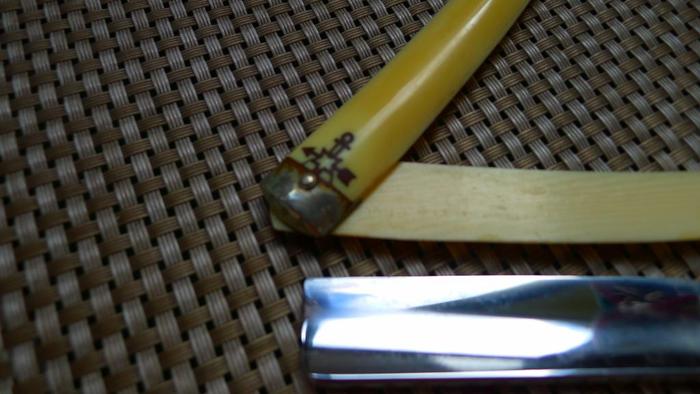
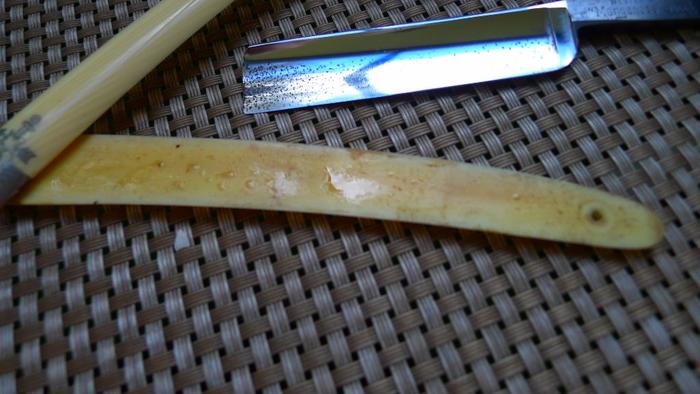
Note the freckled appearance/pattern of rust on the end of the blade in the second pic. That is typical of cell rot IME. That 'stuff' on the scales in the bottom pic is wet even though the razor was stored dry in a closed drawer.Be careful how you treat people on your way up, you may meet them again on your way back down.
-
The Following 5 Users Say Thank You to JimmyHAD For This Useful Post:
32t (09-09-2016), cudarunner (09-09-2016), Geezer (09-28-2016), Johntoad57 (09-09-2016), Prahston (09-09-2016)
-
09-09-2016, 12:25 AM #7

I have quite a few vintage razors...some with celluloid scales...and I keep them in an airtight tote box with gel packs. Now I am concerned this may not be the best way to store my SRs. If one set of scales starts developing cell rot will it spread through the other SRs in the tote box?
-
09-09-2016, 12:28 AM #8
-
09-09-2016, 08:14 PM #9
-
09-10-2016, 07:41 PM #10

This is an "Adoration" that came to me with some other beaters. You can see the color change in the scales and the corresponding rust on the blade.
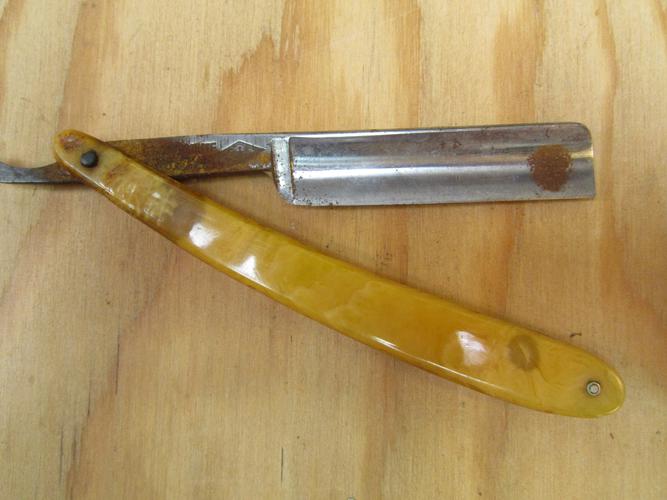
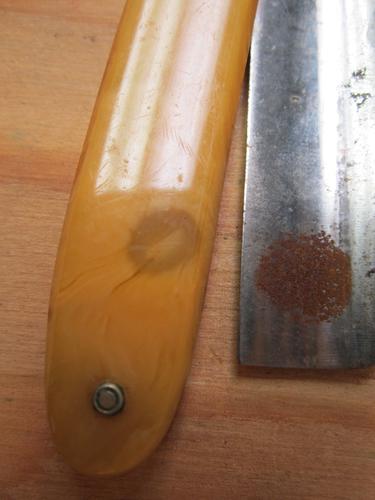
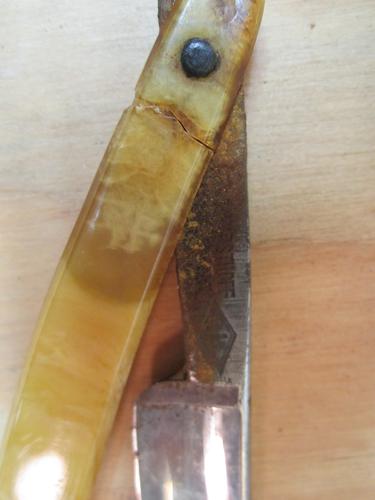
The other side looks ok
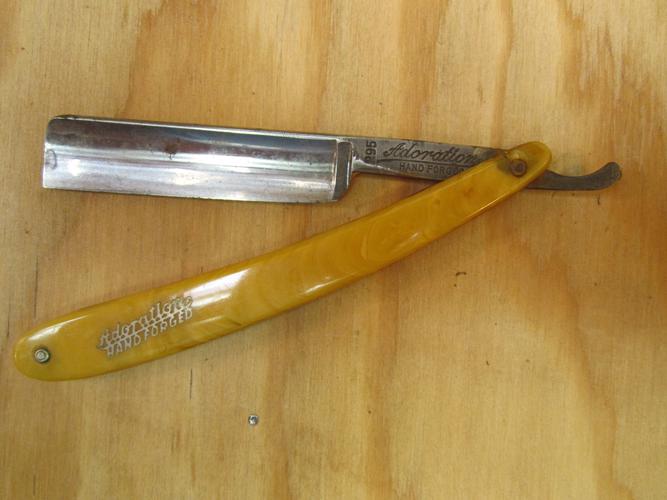
-
The Following 4 Users Say Thank You to xiaotuzi For This Useful Post:
cudarunner (09-10-2016), Geezer (09-28-2016), MrZ (12-20-2017), MW76 (09-11-2016)


 60Likes
60Likes LinkBack URL
LinkBack URL About LinkBacks
About LinkBacks










 Reply With Quote
Reply With Quote



